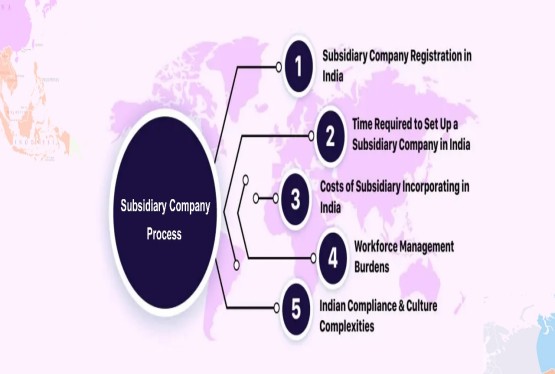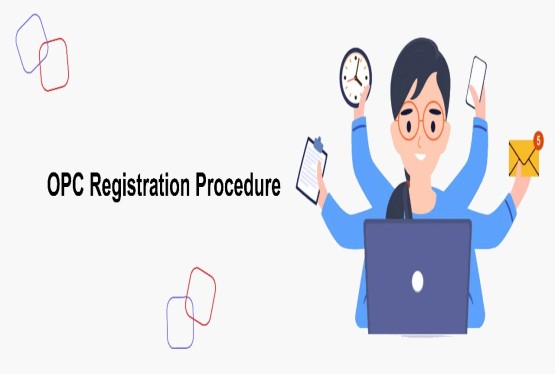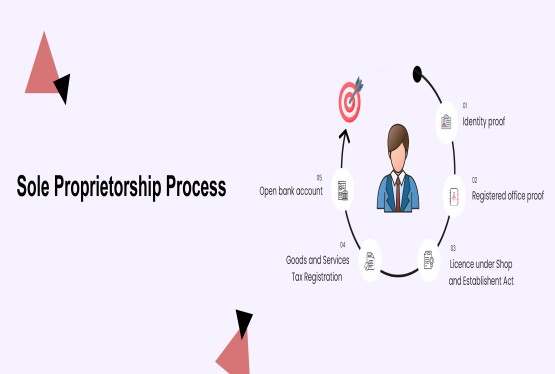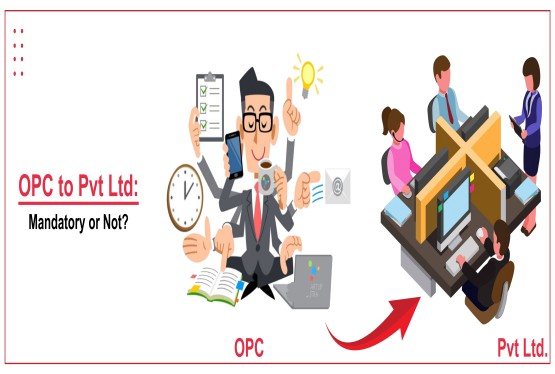What is a Limited Liability Partnership is a common question in business studies. It is a broad concept that is an essential component of partnership norms. The LLP, or Limited Liability Partnership, is a type of corporate business that provides partners with limited liability while incurring minimal compliance costs. It is a newer business concept in which partners have fewer financial obligations and personal liability in the firm.
Law firms are a good example: you'll frequently see names like "Green, Smith, & Hudson, LLP." This means that partners are accountable for their actions but are not liable to the other partners. If you're thinking about forming an LLP, the first thing you should do is consult with a practicing professional such as CA/CS/Lawyer: because this type of partnership is so common, there's a good chance they've done it before.
What Does LLP Stand For?
LLP, or Limited Liability Partnership, requires each partner to contribute to day-to-day business operations while having limited responsibilities. Partners in traditional partnership firms have unlimited liability for the overall debts and legal concerns of the business. These partners' assets may also be used to pay off the firm's debts or liabilities. However, in an LLP, partners are not subject to such massive liabilities. The concept of a Limited Liability Partnership is to have a separate legal existence with fewer liabilities. Aside from that, it has all of the characteristics of a regular partnership.
What is Limited Liability Partnership Act 2008?
The concept of LLP was introduced by the Indian Parliament in the Limited Liability Partnership Act of 2008. A Limited Liability Partnership, as defined in Section 3 of the LLP Act, is a corporate body formed and incorporated under this act. A partnership is a separate legal entity from its partners.
What Are the Differences Between LLPs and General Partnerships?
General partnerships are exactly what they sound like: an agreement between two or more people to collaborate and split profits, sometimes backed up by legal documentation. While these are a quick and easy option for short-term partnerships, they are insufficient in corporate scenarios where many factors must be outlined and agreed upon before the partnership can begin.
An LLP is a more formal and customizable type of partnership. It is a written partnership agreement that includes conditions, factors, and reports that must be submitted by all participating members. All partners manage LLPs, which means they share some liability. However, the liability assumed in the case of LLPs is significantly reduced, as this type of partnership focuses on protecting partners from the risks assumed by a single partner.
A Closer Look at the Advantages of LLPs
Accountants, lawyers, solicitors, and architects all over the world use LLPs to collaborate without taking unnecessary risks. As a result, there are numerous advantages to forming a Limited Liability Partnership, including:
-
Personal Asset Protection: LLP agreements protect a partner's personal assets from business risks because a Limited Liability Partnership is considered a separate legal entity.
-
LLPs Are Infinitely Versatile: The operation of the business, as well as the distribution of profits after overhead costs, are decided by written agreement between members. This enables businesses to be adaptable and change these factors as needed.
-
LLPs Can Hire Employees, Lease Property, and Do Other Things: Because an LLP is a separate legal entity, it can hire employees, lease property, and enter into contracts. This means that the risk is shared by the partners rather than being borne solely by a single owner.
Essentials of Limited Liability Partnerships
While LLPs are highly valued for their adaptability, several factors must be considered when drafting an LLP document. With each partner making a unique contribution, whether it's financial, networking benefits, or time invested in the business, these essential clauses help LLP partners avoid problems or disagreements down the road.
Here are some LLP Agreement Essentials that must be present in any Limited Liability Partnership agreement:
1.The Definition Clause
The Definition Clause, which is considered the core clause of any professionally drafted LLP agreement, includes the following provisions:
-
The definitions of designated partners are examples of necessities.
-
The LLP's operations.
-
The LLP's corporate name for all legal purposes.
Most state laws also require Definition Clauses to include the main office address of the LLP as well as the addresses of the partners named in the agreement.
2.The LLP's Business
The LLP's business is another essential that should be included in any LLP agreement. This clause should also include the LLP's address and operating locations, as well as a start date for the business. This appears to contradict the flexibility of these agreements but getting this out of the way ensures that the business can focus on providing services in a central field.
3. Each Partner's Capital Contribution
The capital contribution of each LLP partner is the third step. This capital must be stated and specified explicitly. The Capital Contribution, also known as the Capital of LLP, is what a partner invests in the business. The capital itself could be anything from working capital to real estate and other types of assets.
For example, an LLP focused on manufacturing may bring in a partner whose Capital Contribution is manufacturing equipment in exchange for a share of the business profits.
4. Partners' Rights and Duties
Before drafting an LLP, partners must agree on their respective rights and responsibilities and have them expressly stated in the agreement. This ensures that the company runs smoothly and that there are no disagreements later on. However, in the absence of a partner performing their duties, they should fully expect to face legal consequences and may even be excluded from the agreement by mutual agreement.
5. Profit-Sharing Percentage
Limited Liability Partnerships, in particular, must state the profit-sharing ratios and losses shared by the partners. To make things easier, the agreement must state the amount or percentage of profit received by each partner, as well as the amount or percentage of losses for which they are responsible. In some cases, LLP agreements provide for profits to be paid as interest on the Capital Contribution of the specific member.
6. The Dispute Resolution Process
An LLP is only considered fully formed if the agreement includes a dispute resolution mechanism. Arbitration is the most commonly used dispute resolution mechanism, in which a third-party, neutral negotiator is brought in to ensure that each partner receives their fair share.
Dispute resolution mechanisms are critical because they allow partners to avoid costly and time-consuming litigation processes with no guarantee of success.
7. Members Are Subjected to Restrictive Covenants
While restrictive covenants are often viewed negatively, they can significantly assist a business in remaining profitable after a specific member leaves. A common example of a Restrictive Covenant is a clause stating that members are not permitted to start a competing business after leaving the LLP. Believe it or not, these are just as important to the LLP's stability as any other clause.
8. The LLP's Timeframe
A Limited Liability Partnership agreement must also specify the partnership's duration. An LLP is typically either perpetual (in which case it exists and is renewed as needed) or has a fixed duration for the partnership, after which the LLP's business is wound up.
9. The Clause of Indemnity
Finally, an indemnities clause should be included in an LLP agreement. An indemnities clause shields the partners from risks, liabilities, or claims incurred while conducting the LLP's business. Members must also mutually agree to indemnify the partnership for losses caused by a violation of laws or ethics, according to standard operating procedure.
How to set up a Limited Liability Partnership?
To form a Limited Liability Partnership, the following steps must be taken:
Step 1: Obtaining the Digital Signature Certificate (DSC)
The first step is to obtain digital signatures from all designated partners. It is critical because all LLP documents must be filed online, which necessitates the use of digital signatures.
Step 2: Obtaining a Director Identification Number (DIN)
The following step is to apply for the DIN of all designated partners or those who intend to be designated partners in the proposed LLP. The application for DIN allotment must be submitted in Form DIR-3.
Step 3: Approval of the LLP's name
To obtain a unique name, a form called Limited Liability Partnership-Reserve Unique Name (LLP-RUN) must be filled out. The form allows for the submission of two names. The MCA portal's free name search facility can be used to ensure that it does not resemble any existing business organization or trademark. The Central Registration Centre will then process the form under Non-STP. Straight through Process (STP) is the method used by India's Ministry of Corporate Affairs (MCA) to approve electronic forms submitted to it. The fees must be paid according to Annexure A. In the event of an error, a person has 15 days to resubmit the form.
Step 4: Formalizing the LLP
The Form for Incorporation of Limited Liability Partnership is the form used in incorporation. This file must be filed with the registrar of the state in which the LLP is registered, and Annexure A requires payment for the same. In cases where the LLP's name has not yet been approved, the proposed name must be used.
Step 5: Submit the LLP agreement.
The Limited Liability Partnership Act of 2008 governs the rights and duties created for the partners as well as the relationships between the partners and the LLP. The last step is to file an LLP agreement in the MCA Portal using Form No. 3 within 30 days of the date of incorporation. It is critical that this be filed on stamp paper, the value of which varies by state.
Conclusion
LLPs should be considered by any business that wishes to operate in an organized and independent manner. They contribute to lowering the risk of unnecessary lawsuits and ensuring that all issues are handled fairly and efficiently. Compliance Calendar LLP is a platform that will teach you everything you need to know about limited liability partnerships.
As a result, LLPs are a useful business partnership solution for many companies, particularly those involved in financial planning, legal services, or architecture design. LLPs can be easily set up and offer fantastic functionality with minimal risk, whether you're just starting out or creating a new avenue of growth.

_crop6_thumb.jpg)










_crop10_thumb.jpg)

































-Form_crop10_thumb.jpg)

_crop10_thumb.jpg)























_learn_crop10_thumb.jpeg)
































_crop10_thumb.jpg)

_crop10_thumb.jpg)





















_crop10_thumb.jpg)















_for_Foreign_Directors_learn_crop10_thumb.jpeg)




_Act,_2015_learn_crop10_thumb.jpg)



































_learn_crop10_thumb.jpg)


































